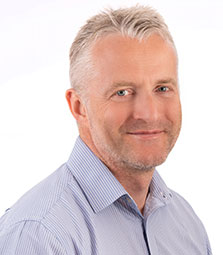What is Skeletal Dysplasia?
Skeletal dysplasia, also called osteochondrodysplasia, is the term used for growth or developmental disorders of the bone and cartilage. It is a rare disorder that typically affects children, resulting in an abnormal shape and size of the legs, arms, spine, or skull. A child born with skeletal dysplasia may have a short stature, also called dwarfism. Skeletal dysplasia can be corrected with timely diagnosis and treatment.
What are the Causes of Skeletal Dysplasia?
Skeletal dysplasia may be hereditary or due to a genetic defect.
What are the Types of Skeletal Dysplasia?
The most common types of skeletal dysplasia include the following:
- Achondroplasia: characterized by dwarfism, and is the most common
- Hypochondroplasia: characterized by short arms and legs with broad hands and feet
- Osteogenesis imperfecta also called brittle bone disease: characterized by fragile brittle bones
- Campomelic dysplasia: characterized by bowed long bones in legs and arms
- Thanatophoric dysplasia: characterized by stunted limbs
- Achondrogenesis: characterized by skeletal abnormalities including short limbs and a small body
What are the Symptoms of Skeletal Dysplasia?
A classic symptom of skeletal dysplasia is stunted growth leading to short stature. Other symptoms may include:
- Disproportionately large head, especially the forehead
- Short or too many fingers or toes
- Developmental delays such as late walking
- Fragile bones
- Bowed legs
- Scoliosis: spinal curvature
- Cleft palate or crowded teeth
- Joint stiffness, pain, or arthritis
- Intellectual disability
How is Skeletal Dysplasia Diagnosed?
A childcare specialist or pediatric surgeon should be consulted to diagnose skeletal dysplasia. During the check-up, the doctor will perform a thorough physical examination and assess the range of motion of the shoulder, hip, and neck, noting any abnormal limb length or spinal curvature. Depending on the patient’s age and condition, X-rays, CT scans, MRIs, or ultrasounds may be ordered to confirm the diagnosis.
What are the Treatment Options for Skeletal Dysplasia?
Skeletal dysplasia can be treated through a variety of methods that include both a conservative approach and surgery. The treatment aims to normalize or accelerate growth and development in your child. Your doctor will decide the best treatment based on your child’s age and the severity of the condition.
Non-Surgical Treatment
The first line of treatment for skeletal dysplasia is conservative management that includes:
- Injection of growth hormones to accelerate growth and increase stature
- Use of a spinal brace to correct spine curvature
- Use of orthosis to provide stability and walking assistance
- Physical therapy to gain mobility and muscle strength
Surgical Management
Surgery is recommended for children who do not respond well to conservative therapy or those with severe skeletal dysplasia. The purpose is to correct a limb or spine deformity or increase limb length. Different surgical options include the following:
Spine Osteotomy
This is performed to treat spine instability and/or deformity. In this surgical procedure, bones in the spine are cut and removed to correct a spinal malalignment.
Limb-Lengthening Surgery
This is performed to lengthen your child’s limbs and stimulate bone growth. The deformed bone is straightened, or a missing bone is replaced.
-

Fracture Care, Limb Lengthening and Deformity, Skeletal Dysplasia
-

Cerebral Palsy, Neuromuscular, Fracture Care, Clubfoot, Metabolic Bone Disease, Hip Disorders, Complex Foot and Skeletal



